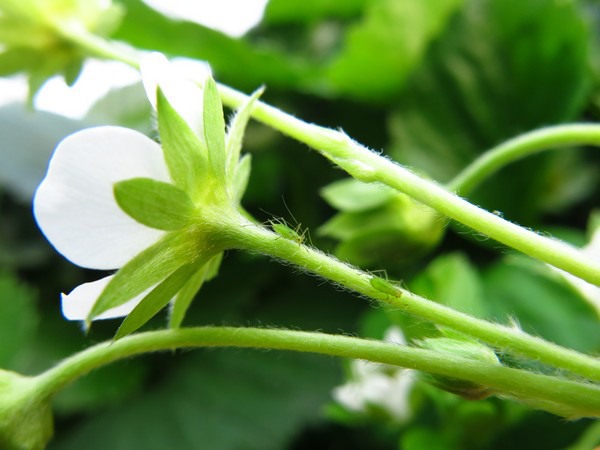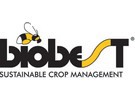Aphids can develop very quickly in strawberry crops. With a number of aphid species commonly found in the crop, the best results are achieved by deploying a mix of biological control agents.
Now that Calypso® is no longer allowed, more and more strawberry growers are choosing to tackle aphids biologically. According to Biobest advisor, Eline Braet, there are two types of insects that can be used to control this pest. "You have beneficials that lay their eggs in adult aphids and predators - that feed directly on aphids. By using both types you can achieve the best possible results."

Parasitic wasps
Parasitic wasps belong to the first category. "When their eggs hatch inside the aphid, the larvae feed on the pest from within – leaving behind gold-colored mummies from which a new generation of parasitoids emerge.
“As there are ten species of aphids that are commonly found in strawberry crops, we recommend introducing several different parasitic wasps,” says Eline. “This can easily be achieved using our Aphi-Mix-System - containing Aphelinus abdominalis, Aphidius colemani, Aphidius ervi and Aphidius matricariae.”
Predators
In contrast, lacewings (Chrysopa-System), ladybirds (Adalia-System), gall midges (Aphidoletes-System), and hoverflies (Eupeodes-System and Sphaerophoria-System) feed directly on the pest. “The larvae attack the aphids sucking out their contents,” explains Eline. “These predators can quickly significantly reduce pest pressure. They are also highly suited to keeping control during the season. "A good example is Eupeodes corollae; this voracious hoverfly is a strong flyer with good searching ability. It can quickly locate aphid hot spots and control them effectively. At temperatures above 25°C, the hoverfly Sphaerophoria rueppellii performs better."
Hygiene
As aphids tend to be an ongoing problem through the lifetime of the crop, Eline advises starting as soon as possible with the biological control strategy.
"By introducing a preventative program, comprising a combination of the biological control agents mentioned above, the populations have a chance to establish before they really have to get to work. If you wait until you see the first aphid, you are probably already too late."
Finally, Eline points out the importance of ‘working clean’. "Aphids can get into a crop in various ways,” she says. “You often see them hitchhiking on plant remains from previous crops. Growers would do well to clear these up."

